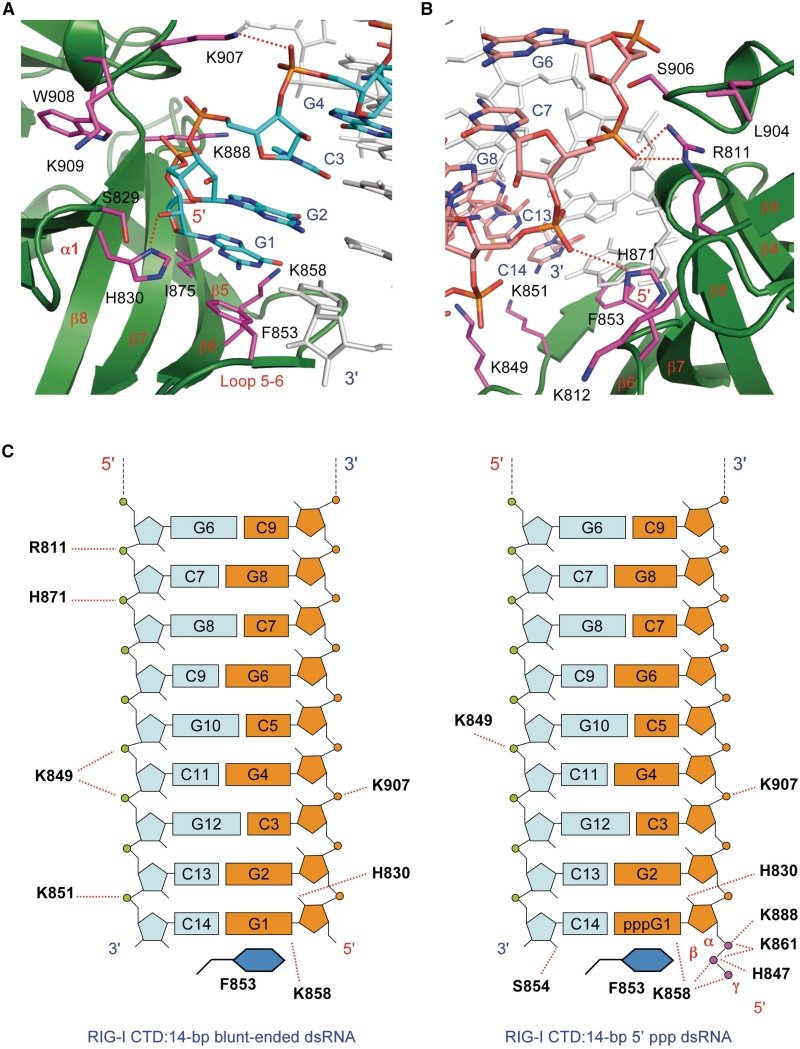Figure 3.
Structural basis of blunt-ended dsRNA recognition by RIG-I CTD. (A) Interactions between the 5′ 4 nt of the 14-bp blunt-ended dsRNA and RIG-I CTD. The dsRNA is shown by the stick models. Carbon atoms of the RNA strand interacting with RIG-I CTD are colored cyan. The complementary strand is colored light gray. RIG-I CTD is shown by the green ribbons. Key residues involved in RNA binding are shown by the magenta stick models. (B) Interactions between complementary strand and RIG-I CTD. The complementary strand is shown by the stick models with carbon atoms colored pink. (C) Schematic representations of the interactions between RIG-I CTD and the 14-bp blunt-ended dsRNA (left) and a 14-bp 5′ ppp dsRNA (right). Nucleotides in the two dsRNA are labeled the same way for comparison. Interactions between the dsRNA and one of the two RIG-I CTD molecules are shown.

